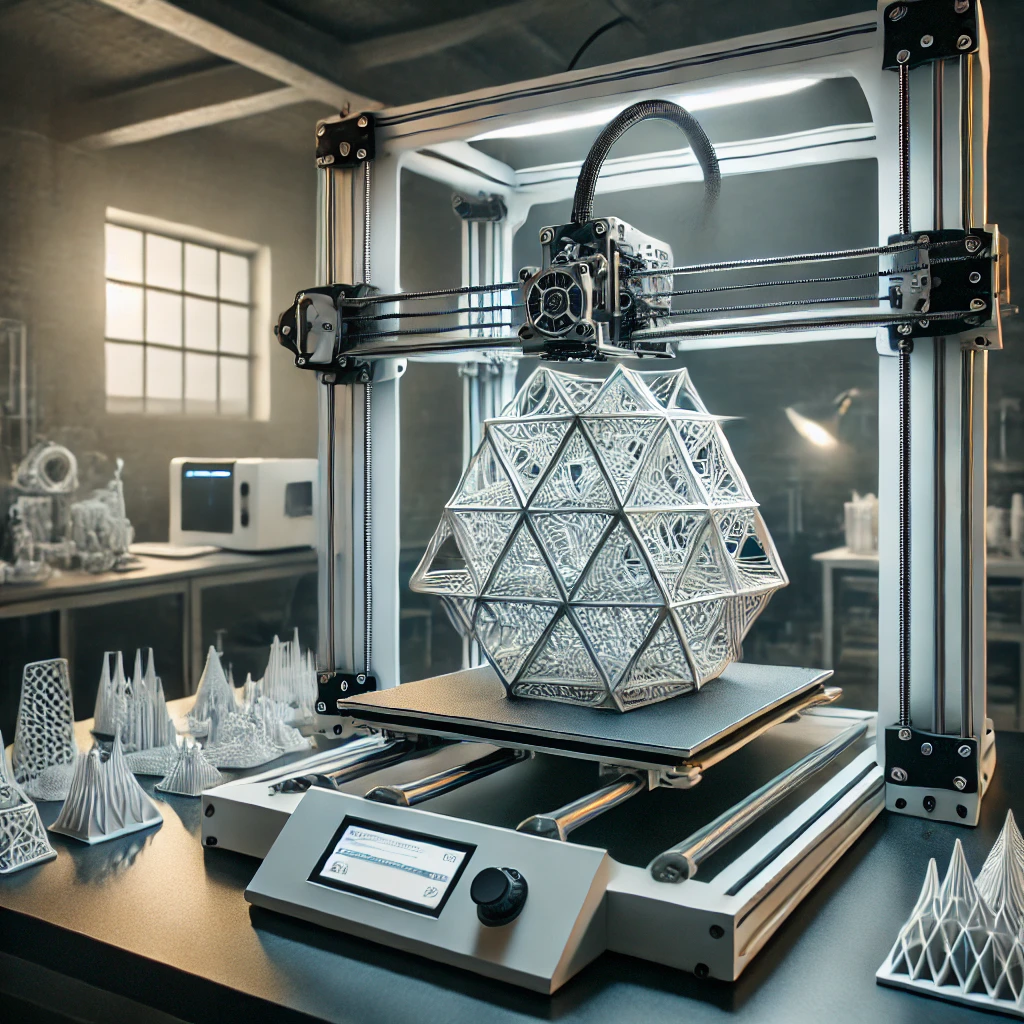With technological advancements, 3D printing (also known as additive manufacturing) has become a disruptive technology across various industries, including manufacturing, healthcare, architecture, and artistic design. Compared to traditional manufacturing, 3D printing offers high flexibility, cost efficiency, and customized production, fundamentally reshaping global production methods. This article explores the key advantages of 3D printing and its applications in different fields.
1. High Design Freedom: Overcoming Traditional Manufacturing Limitations
Conventional manufacturing techniques like injection molding, CNC machining, and casting are often constrained by tooling and processing complexities. In contrast, 3D printing allows direct fabrication from digital models, eliminating the need for extra tools and significantly enhancing design flexibility.
(1) Realization of Complex Geometries
3D printing effortlessly creates intricate curves, hollow structures, and biomimetic designs that are difficult to achieve using traditional methods. Examples include:
- Lightweight honeycomb-structured components
- Complex bio-inspired medical implants
- Highly detailed artistic sculptures
(2) Faster Design Iterations
With 3D printing, designers can quickly modify parameters, optimize models, and print new versions instantly, significantly shortening product development cycles, particularly for prototype design and product testing.
2. Cost Reduction and Higher Material Efficiency
(1) No Need for Molds: Lower Production Costs
- Traditional manufacturing requires expensive mold development, making it suitable for mass production but less efficient for small-batch or custom products.
- 3D printing eliminates mold costs, enabling on-demand production and significantly reducing small-scale manufacturing expenses, which benefits startups and customized product markets.
(2) High Material Utilization: Less Waste
- Traditional subtractive manufacturing (e.g., CNC machining) carves material away, generating significant waste.
- 3D printing uses additive manufacturing, building layer by layer, using only the necessary material, reducing waste and improving cost efficiency.
3. Customization and Personalized Production
(1) On-Demand Customization for Individual Needs
- 3D printing allows each product to be unique, eliminating the need for large-scale production, making it ideal for custom healthcare, jewelry, and furniture.
- In healthcare, 3D printing enables personalized prosthetics, dental implants, and surgical guides, enhancing treatment effectiveness.
(2) Localized Production: Shorter Supply Chains
- Traditional manufacturing relies on global supply chains, which can be disrupted by logistics, tariffs, and material shortages.
- 3D printing allows local production at factories or even homes, reducing transportation costs and increasing efficiency.
4. Versatile Materials for Various Applications
(1) Wide Range of Materials for Different Needs
3D printing supports multiple materials, including:
- Plastics (PLA, ABS, PETG): Used in product prototypes, educational models, and consumer electronics.
- Metals (Titanium, Stainless Steel, Aluminum): Applied in aerospace, automotive, and medical implants.
- Ceramics, Resins, Carbon Fiber, and Glass, expanding the scope of 3D printing applications.
(2) Multi-Material Printing for Complex Functions
- Advanced 3D printing technologies support multi-material printing, allowing the combination of different properties within a single object.
- For example, the healthcare industry can print bone implants with varying stiffness, better suiting patient needs.
5. Faster Production Speed: Accelerating Time-to-Market
- 3D printing rapidly transforms design concepts into tangible products, significantly reducing development time compared to traditional methods.
- In emergency manufacturing (e.g., during the COVID-19 pandemic), 3D printing enabled quick production of medical protective gear, preventing supply chain delays.
6. Eco-Friendly and Sustainable Manufacturing
(1) Lower Carbon Footprint and Resource Consumption
- Traditional manufacturing often involves long-distance transportation of raw materials and finished products, increasing carbon emissions.
- 3D printing supports local production, reducing transportation needs and lowering carbon footprints.
(2) Recyclable Materials for Sustainability
- Many 3D printing materials, such as PLA, are derived from renewable resources and biodegradable, making them environmentally friendly.
- Some 3D printers support recycling waste material, further reducing resource waste.
7. Future Development and Application Prospects
With continuous technological advancements, the future of 3D printing holds limitless possibilities:
- Bioprinting: Printing artificial organs, solving transplant shortages.
- Construction 3D Printing: Rapidly printing houses, reducing construction costs and improving efficiency.
- Food 3D Printing: Creating personalized meals for special dietary needs.
- Aerospace Industry: NASA has tested 3D printing in space, paving the way for space exploration applications.
Conclusion
With its advantages in design freedom, cost reduction, customization, and sustainability, 3D printing is transforming the future of manufacturing. From individual creators to industrial production, 3D printing is revolutionizing various sectors, driving innovation. If you’re looking to cut production costs, optimize supply chains, or explore new manufacturing methods, 3D printing is a technology worth embracing!
